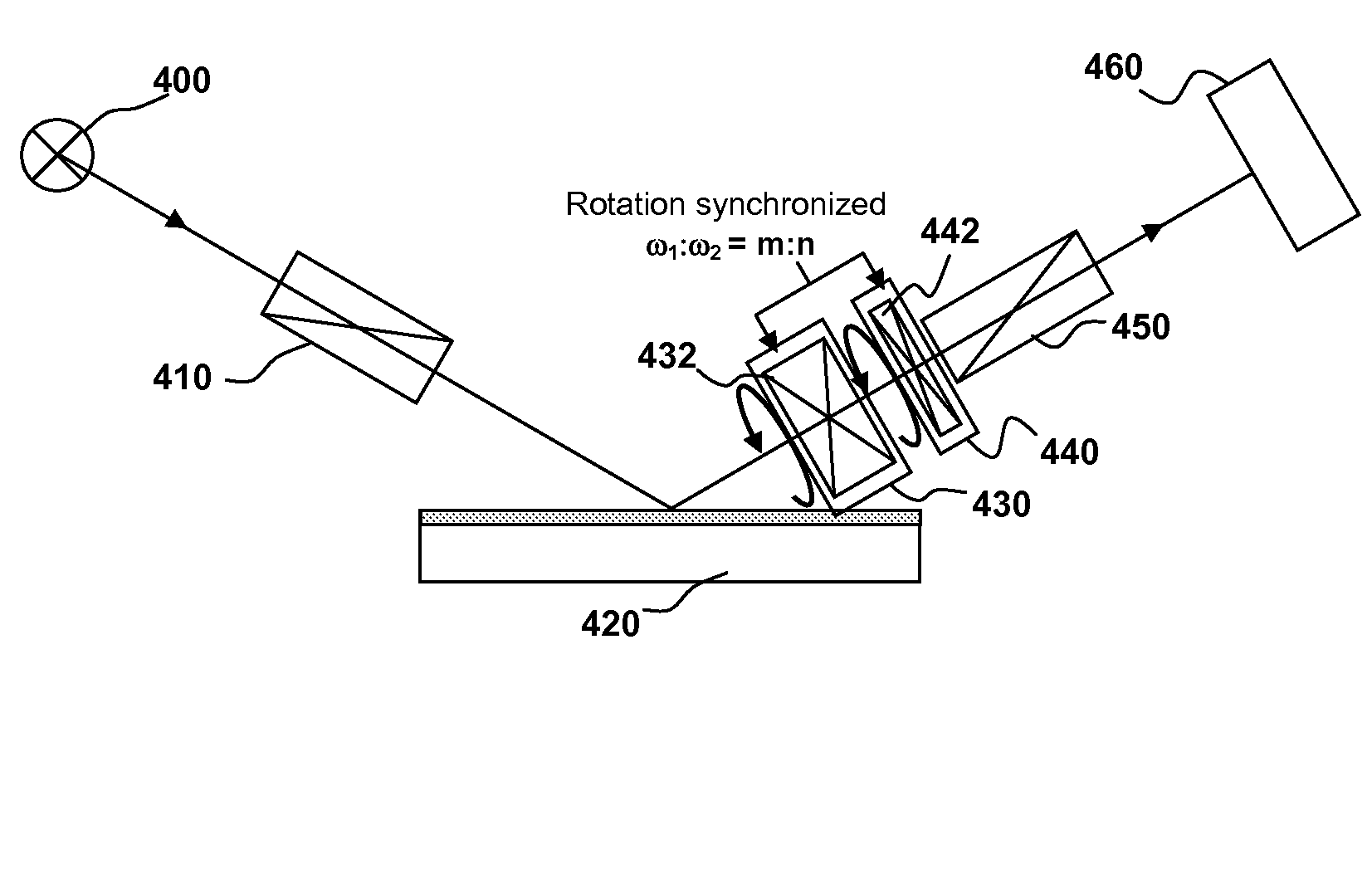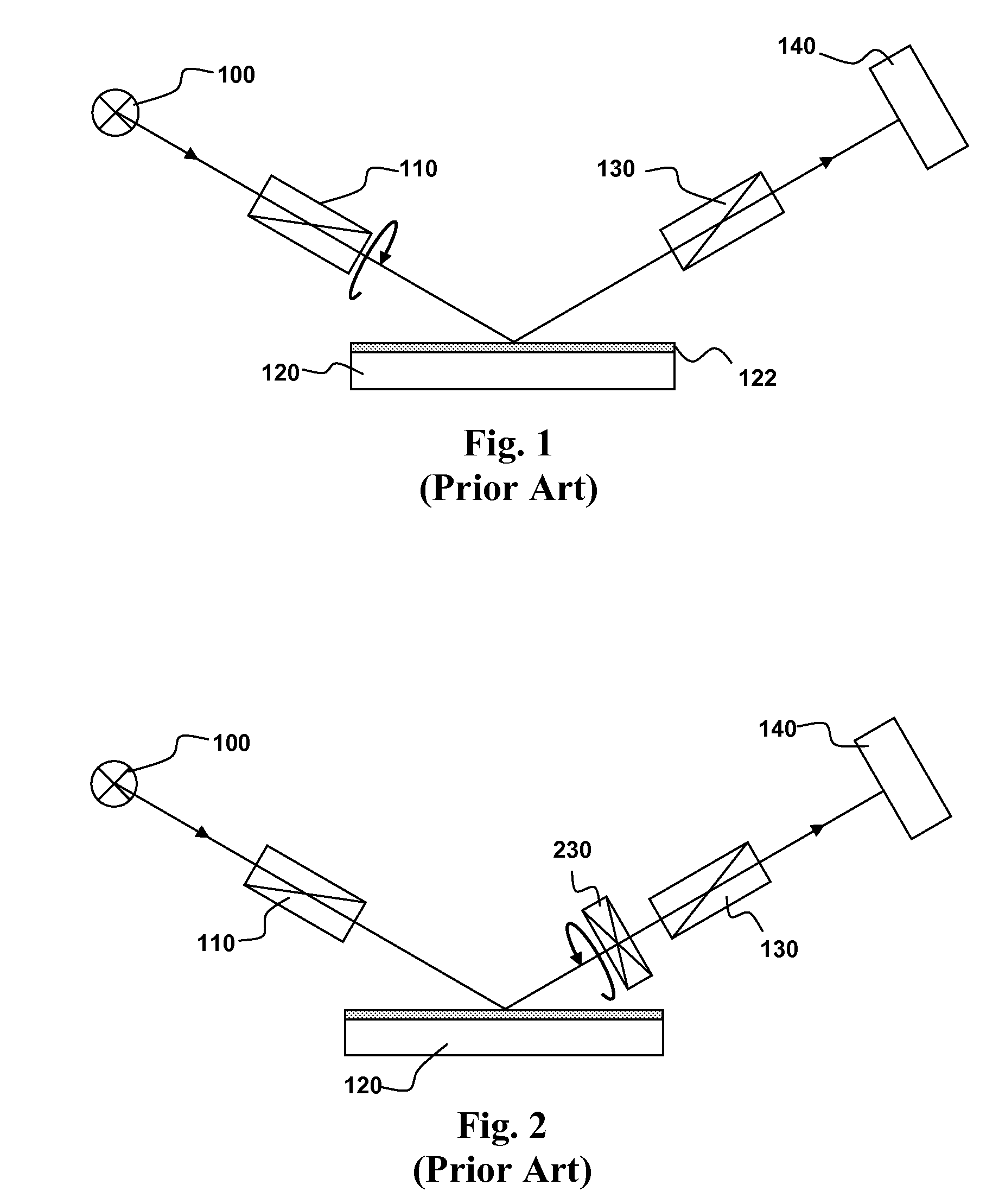Complementary waveplate rotating compensator ellipsometer
a compensator and waveplate technology, applied in the field of ellipsometry, can solve the problems of inability to tell the handness of the reflected elliptical mode, loss of all data, and increased measurement sensitiveness, and achieve the effect of facilitating operation
- Summary
- Abstract
- Description
- Claims
- Application Information
AI Technical Summary
Benefits of technology
Problems solved by technology
Method used
Image
Examples
first embodiment
[0031]In contrast, FIG. 4 shows the novel complementary dual rotating compensator ellipsometer disclosed herein. It enables the user to select specifically two waveplates 430 and 440 of different thickness so that their respective quarter wave retardation occurs at different wavelengths. The sole purpose of this configuration is to increase the wavelength range of useful sensitivity and to optimize the sensitivity over all available wavelengths.
[0032]In the embodiment illustrated in FIG. 4, referred to herein as the single waveplate equivalent configuration, both waveplates are located next to each other on the same side of the sample. In the (idealized) case of truly complementary waveplates, this configuration returns the same information as a single rotating compensator system, since the incident light has the same polarization state as in the RCE configuration of FIG. 2, yet the useful wavelength range for the system is much extended. Specifically, the second waveplate does not ...
second embodiment
[0042]In the complementary waveplate dual rotating compensator ellipsometer two compensator assemblies having waveplates of different thickness are located on either side of a sample 630 as illustrated in FIG. 6. In this embodiment two compensators having waveplates of specific and different thickness are mounted on either side of the sample 630 in a so-called symmetric configuration In particular the ellipsometer has a source 600—Polarizer 610—First compensator assembly 620—Sample 630—Second Compensator assembly 640—Analyzer 650—Detector 660 configuration. However, depending on the application, it may be somewhat less ideally suited for the sole purpose of extending the available wavelength range since the incident polarization is being affected by the rotating waveplate, which could make the reflected beam of light more sensitive to additional sample properties, such as the reflection differences of the sample depending on the azimuth of the sample relative to the direction of pol...
PUM
 Login to View More
Login to View More Abstract
Description
Claims
Application Information
 Login to View More
Login to View More - R&D
- Intellectual Property
- Life Sciences
- Materials
- Tech Scout
- Unparalleled Data Quality
- Higher Quality Content
- 60% Fewer Hallucinations
Browse by: Latest US Patents, China's latest patents, Technical Efficacy Thesaurus, Application Domain, Technology Topic, Popular Technical Reports.
© 2025 PatSnap. All rights reserved.Legal|Privacy policy|Modern Slavery Act Transparency Statement|Sitemap|About US| Contact US: help@patsnap.com



